Here are 7 pests that are (surprisingly) beneficial for your garden
BY WIKILAWN | APRIL 1ST, 2019 | BLOGFinding insects in your garden isn’t always cause for concern – some are there to help! When it comes to lawn and garden care, there are a variety of insects that provide a benefit for your flowers, herbs, and vegetables by controlling the pests that would otherwise cause damage. Using select insects in your garden is also a great way to avoid the usage of pesticides and maintain long-term garden health.
1. Ladybugs
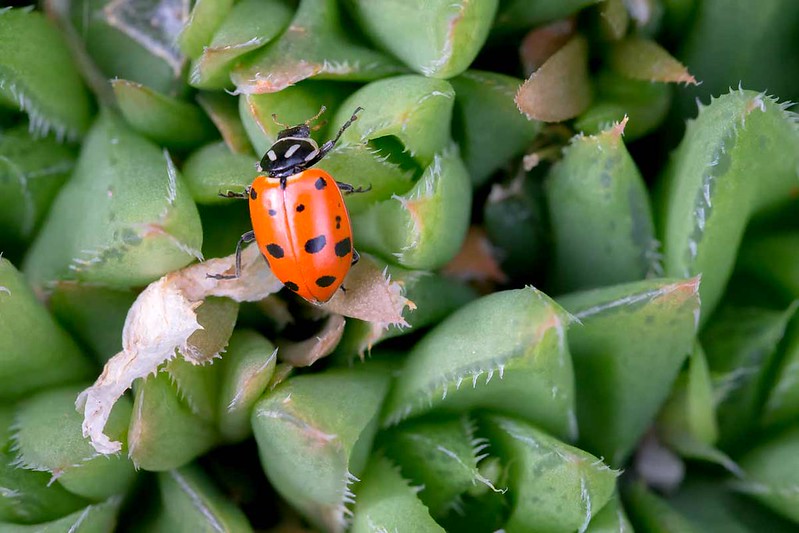
We’ll start with one of the most recognizable insects in North America: the ladybug. This black-spotted insect is attracted to your garden by dill, dandelion, common yarrow, and basket of gold. It feeds on aphids, whiteflies, and Colorado potato beetles, keeping your plants from being stunted, leaves from being coated with foreign substances, and vegetation from contracting diseases.
2. Aphid Midges
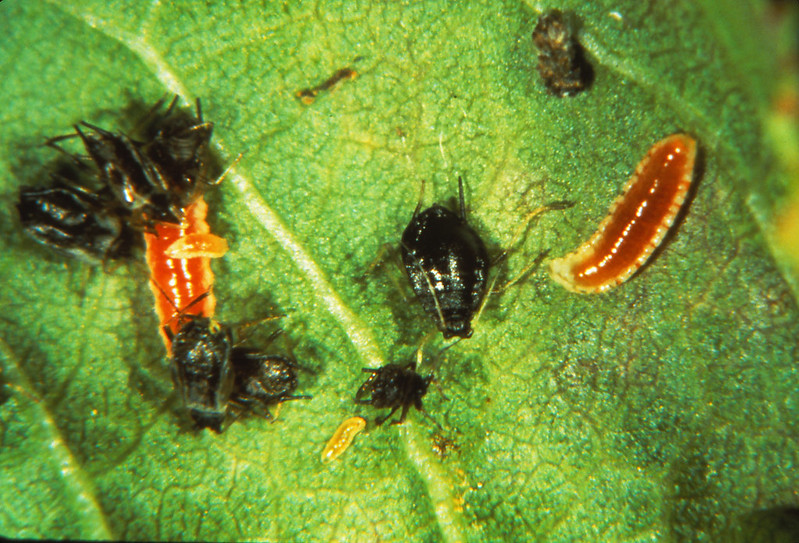
These small insects measure in at less than 1/8th of an inch in length when full grown, but it’s the larvae that we’re interested in. An adult female will deposit between 100 and 250 eggs at a time that hatch in two to three days. Once the larvae are three to seven days old, they will begin eating aphids; one larva can kill between 10-65 aphids in a day! You can keep these insects happy in your garden by planting dill and pollen-heavy plants.
3. Minute Pirate Bugs
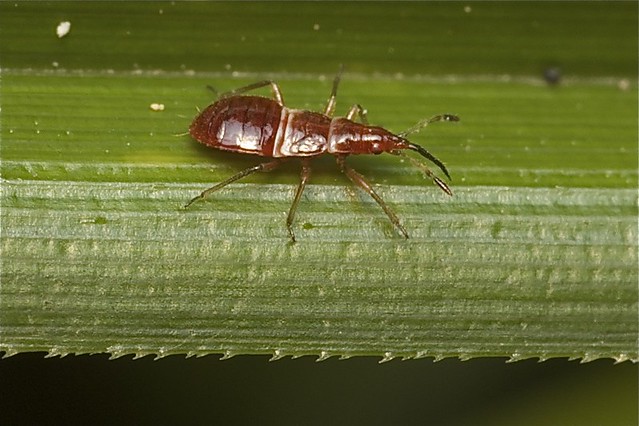
Minute Pirate Bugs are attracted by caraway, fennel, spearmint, and alfalfa and prey on spider mites, caterpillars, aphids, thrips, and insect eggs. You get a one-two punch with this critter since both the adults and nymphs feed on a variety of insects.
4. Spiders
They get a bad reputation, but spiders really can be your friend! They are great at controlling a variety of pest populations, including, but not limited to, aphids, roaches, fruit flies, bed bugs, and grasshoppers. They enjoy hanging out in tall plants and trees, so if you’re trying to attract more, consider planting some leafy grasses or small trees near your garden.
5. Praying Mantis
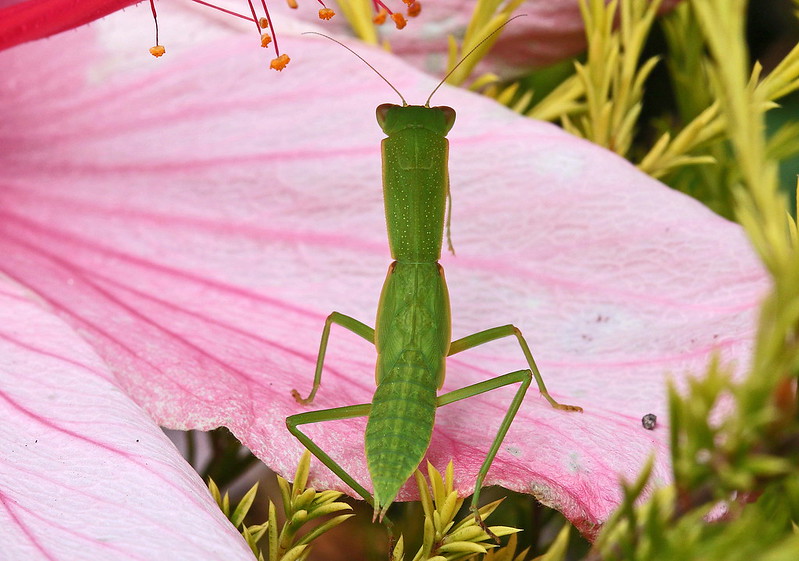
These majestic creatures can turn their heads 180-degrees to get a good view of their surroundings, which also means they can spot those moths and caterpillars that are wreaking havoc on your plants. They also enjoy feasting on beetles and crickets! Be sure to include some tall grasses, marigolds, and dill to attract them.
6. Lacewings
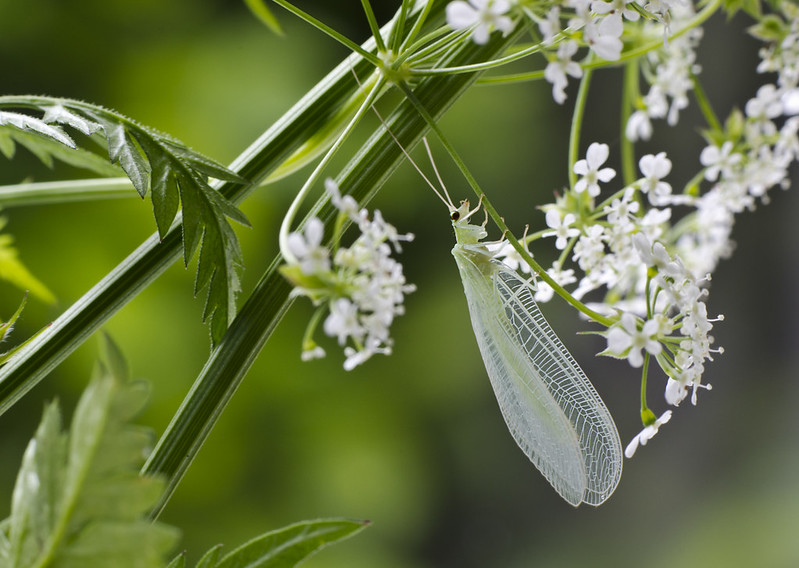
The adults and larvae of this family enjoy a good meal of aphids, caterpillars, thrips, whiteflies, and mealybugs. You can plant angelica, sweet asylum and cosmos to attract them and keep them happy. Green and brown lacewings will both get the job done, so feel free to introduce whichever variety you’d like to your garden.
7. Ground Beetles
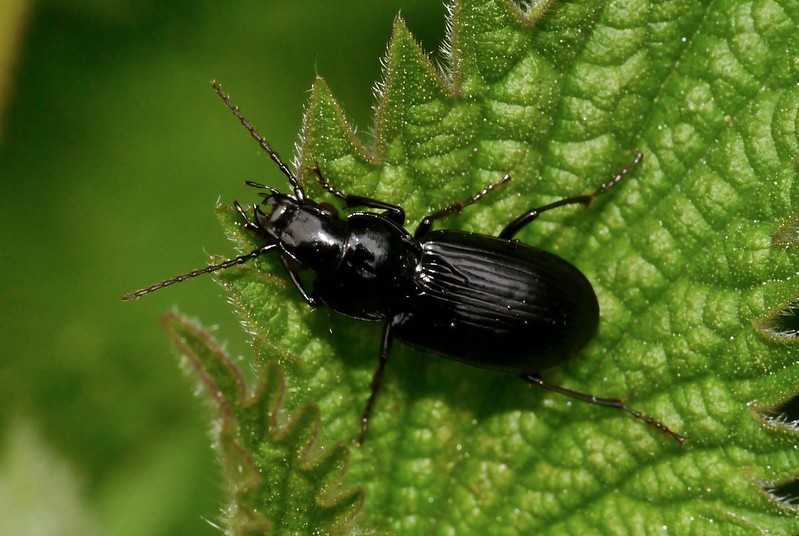
Since ground beetles are nocturnal, they make a great hunter of slugs, snails, maggots, and cutworms that live in your soil. Did you know that just one beetle larva can eat 50 caterpillars? Give these creatures a home with plenty of perennials near your garden.
Why should you consider allowing insects in your garden?
When you use good bugs in your garden to keep pests at bay, you’re helping the environment! Chemical pesticides might work the first time you have a pest problem, but they wipe out many of the helpful insects as well, leaving your garden unprotected when the harmful aphids and mealworms return.
It’s also a cost-effective solution; simply build the insects a home they’ll feel comfortable in and you’ll have pest protection for the seasons to come! Make sure that the climate is appropriate for the insects you bring to your garden, and that they will have enough food to keep them from venturing to other areas for nourishment. Of course, if pest problems persist you can always contact a local pest control company for extra assistance and to protect your hard work! Introducing beneficial insects is a great way to garden as nature intended, and we hope you’ll give it a try.
Do you still have questions about lawn care? Visit our Lawn Care page for the best lawn & garden tips n’ tricks on the internet!
Top Photo: Flickr // keynowski